Arg-e Bam: The Ultimate Guide to Ancient Bam Citadel
Arg-é Bam Travel Guide

Discover the ancient majesty of Arg-e Bam, the world’s largest adobe fortress, located in Iran’s southeastern Kerman Province. This UNESCO World Heritage site dates back to the Achaemenid Empire, offering a fascinating glimpse into Persian history and architecture.
Explore its vast cultural landscape, where history and resilience converge amidst the ruins of homes, bazaars, and public buildings, telling the story of a once-thriving desert city.
Contents
Overview of Arg-e Bam
Located on the southern edge of the Iranian plateau, amidst a harsh desert landscape, lies the ancient citadel of Arg-e Bam.
This remarkable heritage site, near the modern city of Bam in Kerman Province, southeastern Iran, stands as a testament to the region’s rich history and architectural innovation.
Bam was a key nexus, bridging Europe and the Persian Gulf to India and Pakistan.
This remarkable site, with its origins tracing back to the Achaemenid period (6th to 4th century B.C.), represents one of the most significant cultural and historical treasures of Iran.
Over centuries, Arg-e Bam evolved at the crossroads of important trade routes, flourishing as a center for silk and cotton garment production.
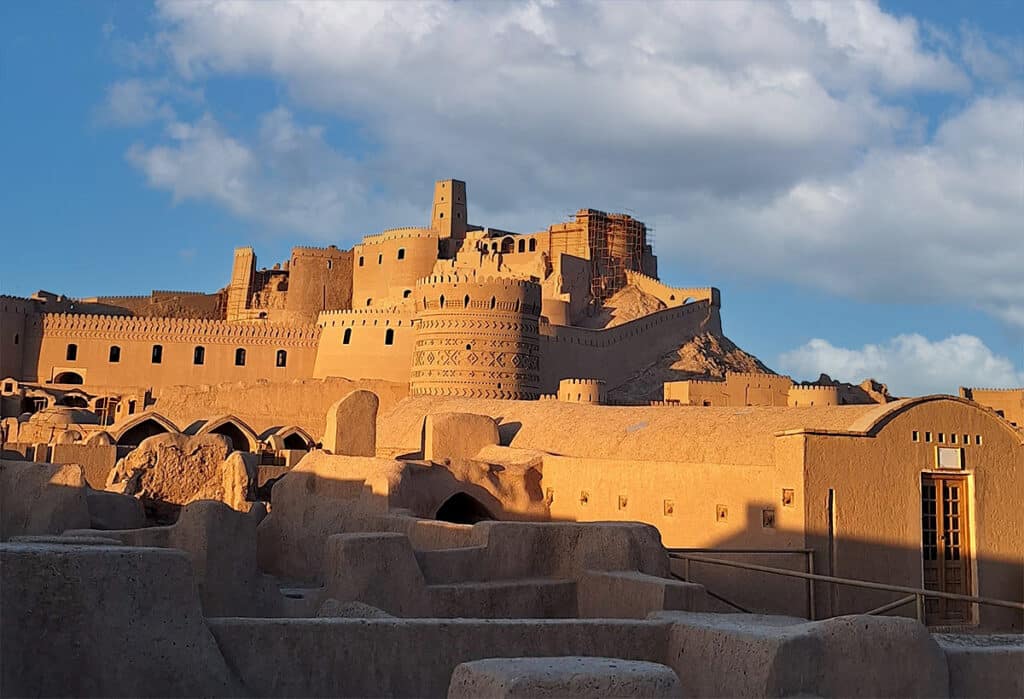
The citadel, crafted using traditional mud layer techniques (Chineh) combined with mud bricks (Khesht), stands as the most representative example of a fortified medieval town built in vernacular architecture.
The heart of Arg-e Bam was its thriving marketplace, surrounded by an elaborate network of Qanats (underground irrigation canals), which supported life in this oasis.
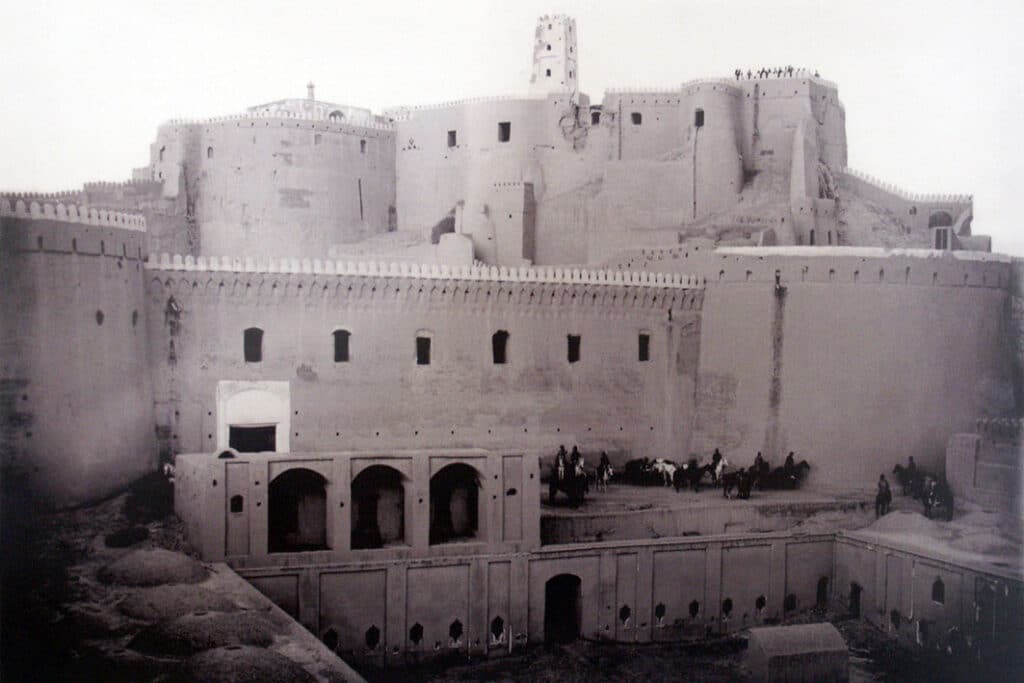
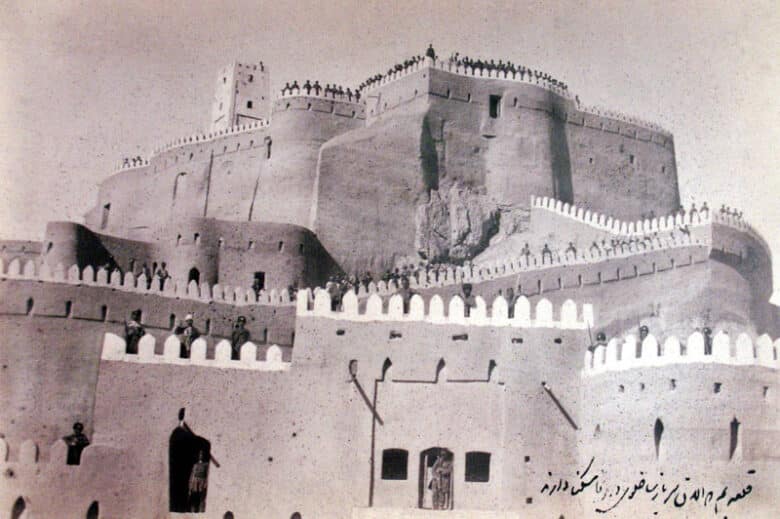
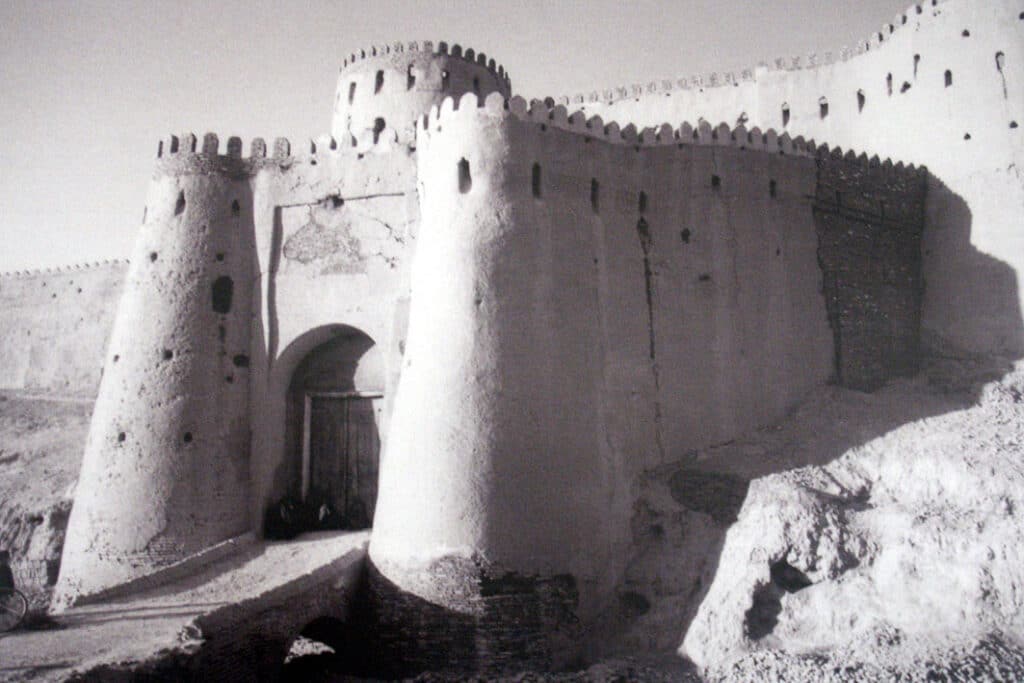
The entire cultural landscape of Bam demonstrates an outstanding example of the interaction between man and nature in a desert environment, leveraging an intricate social system alongside precise tasks and responsibilities that have been preserved up to the present day.
However, the 2003 earthquake struck a devastating blow to Arg-e Bam, destroying much of the city and the archaeological site.
The tragedy brought to light the vulnerability of mud buildings and raised questions about the resilience of ancient earthen structures. Despite the extensive damage, the disaster also sparked a global interest in the preservation and restoration of Arg-e Bam.
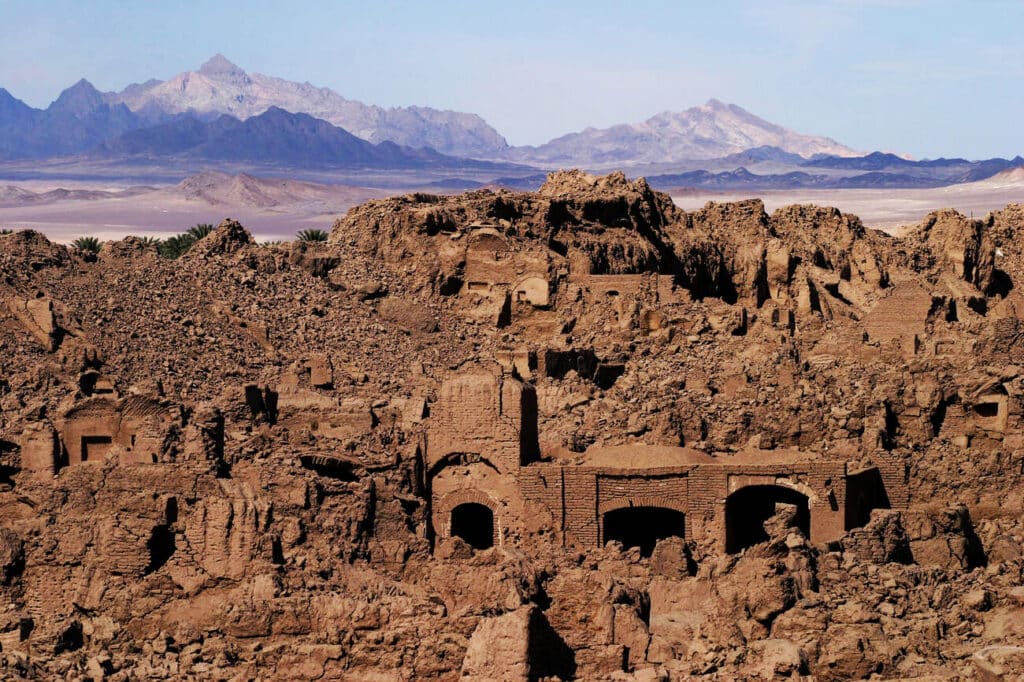
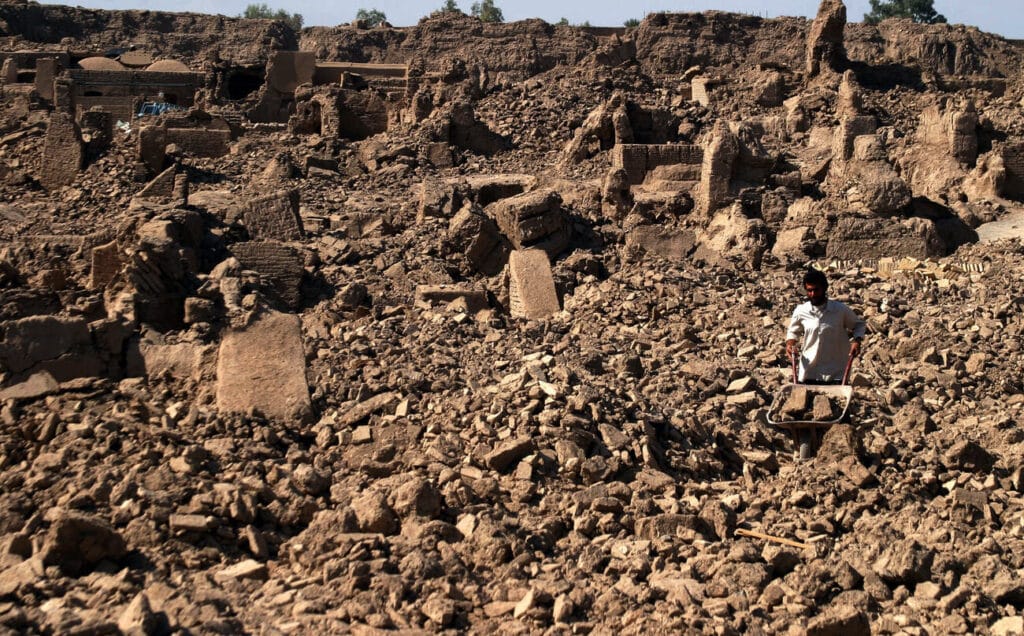
The site has since been the focus of numerous restoration efforts, underlining the importance of conserving this unique piece of human heritage.
Today, Arg-e Bam stands not just as a testament to the architectural and engineering prowess of ancient Persia but also as a symbol of resilience, cultural identity, and the ongoing efforts to safeguard our global heritage for future generations.
The story of Arg-e Bam, from its ancient beginnings through its golden ages, decline, and the path to restoration, continues to fascinate historians, architects, and travelers alike, offering invaluable insights into the rich tapestry of human civilization.
History of Arg-e Bam
Early Beginnings: From Achaemenid Roots to a Thriving Citadel
Arg-e Bam’s story begins in the shadows of history, with its earliest roots tracing back to the Achaemenid period (6th to 4th century B.C.).
This era marked the emergence of Bam as a fortified settlement, strategically located on the silk and spice routes that connected the ancient world. The ingenious use of qanats, an ancient system of underground canals, laid the foundation for the oasis city, enabling it to thrive in the arid landscape of southeastern Iran.
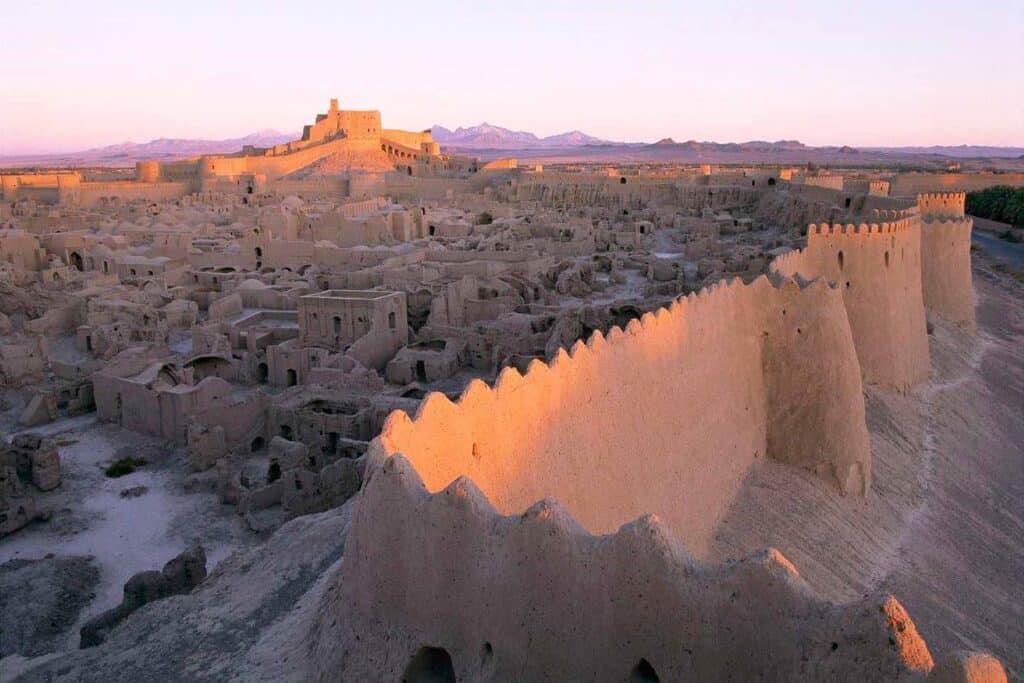
As centuries progressed, Bam evolved beyond its Achaemenid origins. During the Parthian and Sassanian periods, it expanded and fortified, reflecting the growing importance of the citadel as a military, economic, and administrative center. The unique architectural style of Arg-e Bam, characterized by its use of earth in construction, began to take shape, symbolizing the adaptation of Persian architectural ingenuity to the challenges of desert living.
The Golden Ages: Trade, Silk, and Cotton
The golden ages of Arg-e Bam unfolded between the 7th and 11th centuries, a period during which the citadel became a nexus of international trade. Located at the crossroads of major trade routes, Bam emerged as a bustling commercial hub, renowned for its production of silk and cotton garments. The city’s bazaars teemed with traders from distant lands, making Bam a melting pot of cultures and a beacon of prosperity in the region.
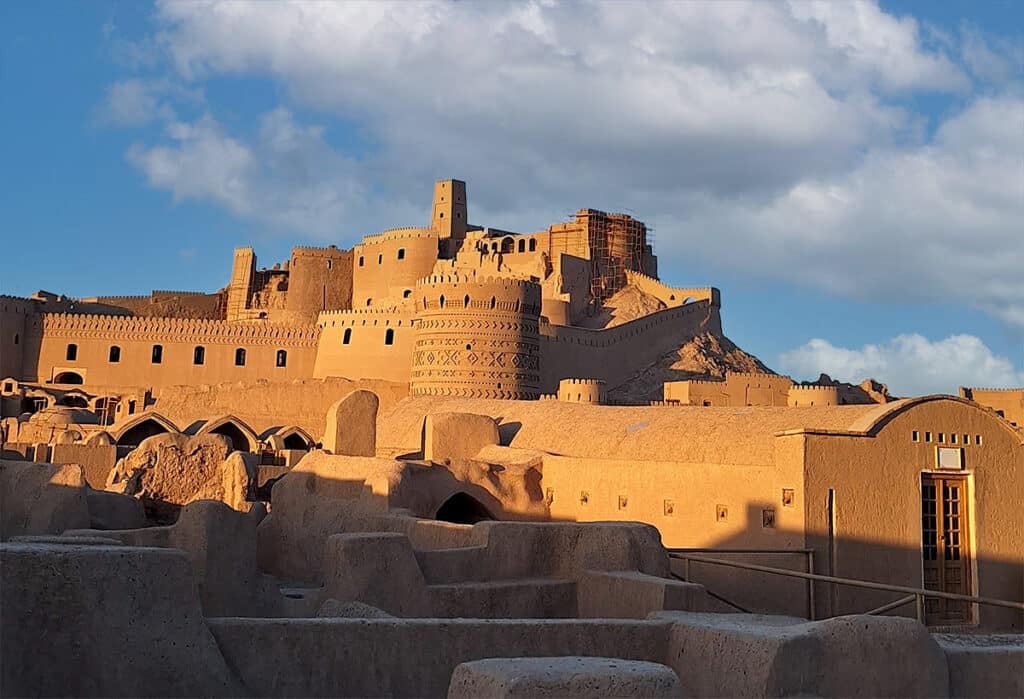
This era also witnessed the zenith of Bam’s architectural development, with the expansion of its fortified structures and the enhancement of its irrigation systems. The cultural landscape of Bam, marked by its harmonious integration of man-made and natural elements, reached its pinnacle, illustrating the peak of societal organization and urban sophistication.
Decline and Abandonment: The Qajar Dynasty to the 20th Century
The fortunes of Arg-e Bam began to wane with the advent of the Qajar dynasty in the 18th century. Political turmoil, changing trade routes, and natural calamities contributed to the gradual decline of the citadel. By the 19th century, Bam had lost much of its former glory, with many of its residents moving to the newly established city nearby. The once-thriving oasis city slowly turned into a ghost town, with its grand edifices succumbing to neglect and decay.
The 20th century saw limited efforts to preserve and restore Arg-e Bam, but it wasn’t until the site gained recognition as a significant piece of world heritage that concerted restoration initiatives began to take shape. Despite these efforts, Bam remained largely forgotten, its stories buried under layers of dust.
The 2003 Earthquake: Tragedy and Transformation
The tragic earthquake of December 26, 2003, marked a turning point in the history of Arg-e Bam. Registering a devastating 6.6 on the Richter scale, the quake reduced much of the ancient citadel to rubble, highlighting the vulnerability of this heritage site. The international community’s response was swift, with efforts to preserve and restore Bam gaining momentum.
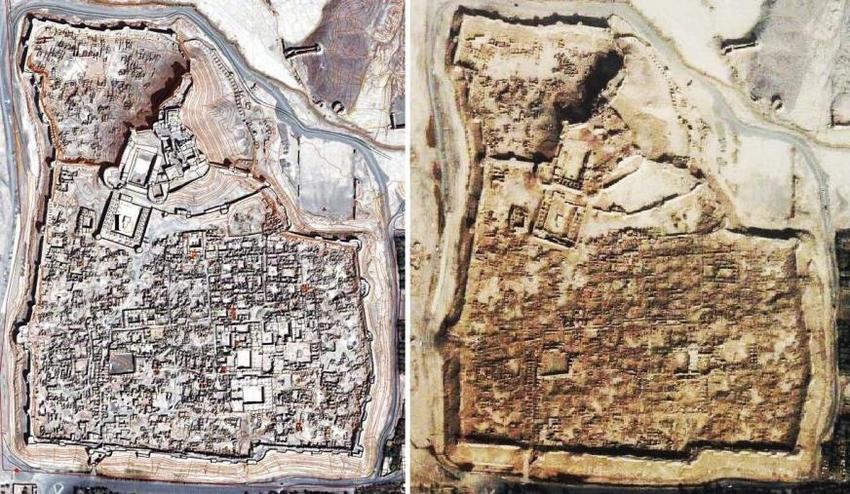
The disaster brought Arg-e Bam back into the limelight, not just as a site of archaeological significance but as a symbol of human resilience and cultural identity. Restoration efforts have since focused on blending traditional techniques with modern conservation practices, aiming to resurrect Bam from its ashes while retaining its historical essence.
Architectural Marvels
Design and Structure: Mud Layer Technique (Chineh and Khesht)
Arg-e Bam is a testament to the architectural ingenuity of ancient Persia, particularly in its adaptation to the harsh desert environment. The citadel’s construction utilized two primary techniques: Chineh (mud layering) and Khesht (mud bricks).
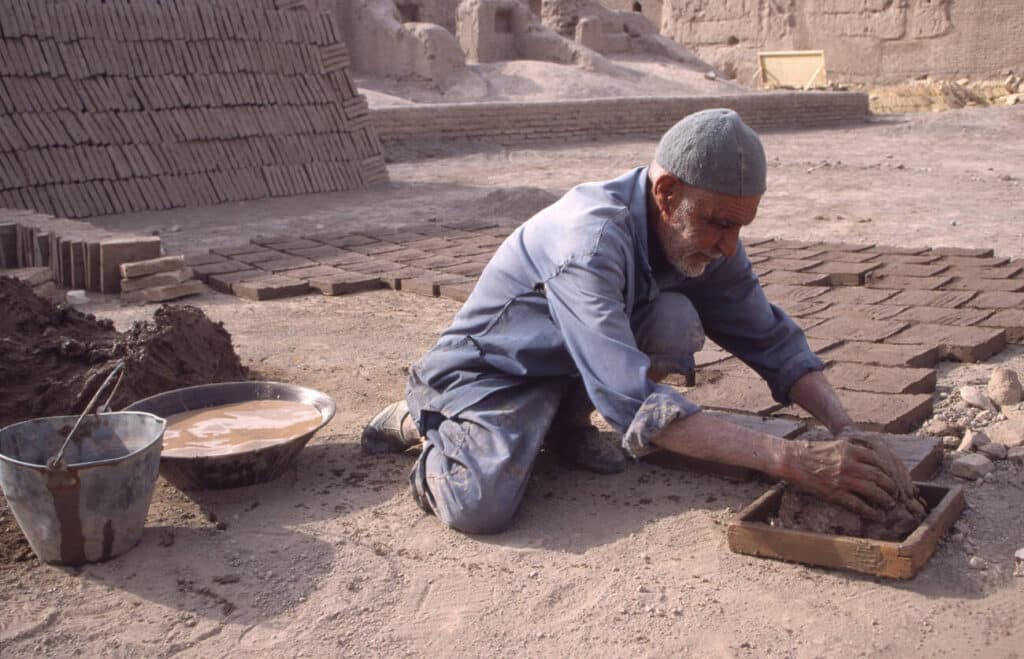
These methods allowed for the creation of structures that were not only resilient to the extreme temperatures but also exhibited remarkable durability. Chineh involved layering mud and organic materials to form walls that insulated interiors from the heat and cold, while Khesht made use of mud bricks for more defined architectural features. This blend of techniques resulted in a unique aesthetic that was both functional and beautiful, allowing Bam to thrive as a desert oasis.
The Citadel Complex: Governor’s Quarters and Military Significance
At the heart of Arg-e Bam lay the citadel complex, a fortified area that served both as the administrative center and the military stronghold. The Governor’s Quarters symbolized the political power and prestige of Bam, featuring elaborate courtyards, grand eyvans (reception halls), and residential areas designed for comfort and opulence. The complex also included the Main Tower, a strategic lookout that provided panoramic views of the surrounding landscape and served as a defensive structure.
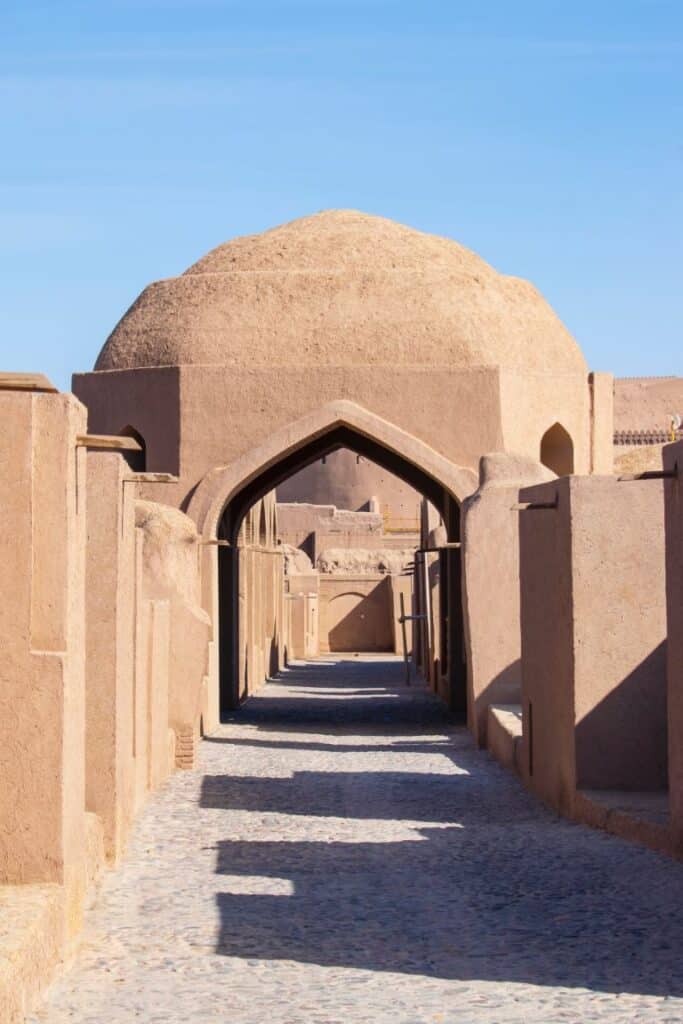
The military significance of the citadel was underscored by its barracks, stables, and armories, which housed the soldiers and their mounts, along with weaponry and supplies. These facilities highlight the strategic importance of Bam as a military outpost on the trade routes, offering protection and asserting control over the region.
Residential and Commercial Life: The Bazaar and Living Quarters
Beyond the military and administrative structures, Arg-e Bam was alive with the buzz of commercial and residential activities. The bazaar was the economic heart of the citadel, a bustling marketplace where traders from distant lands exchanged goods, ideas, and cultures. This vibrant commercial center was lined with shops, caravanserais, and workshops, showcasing the prosperity and openness of Bam to the world.
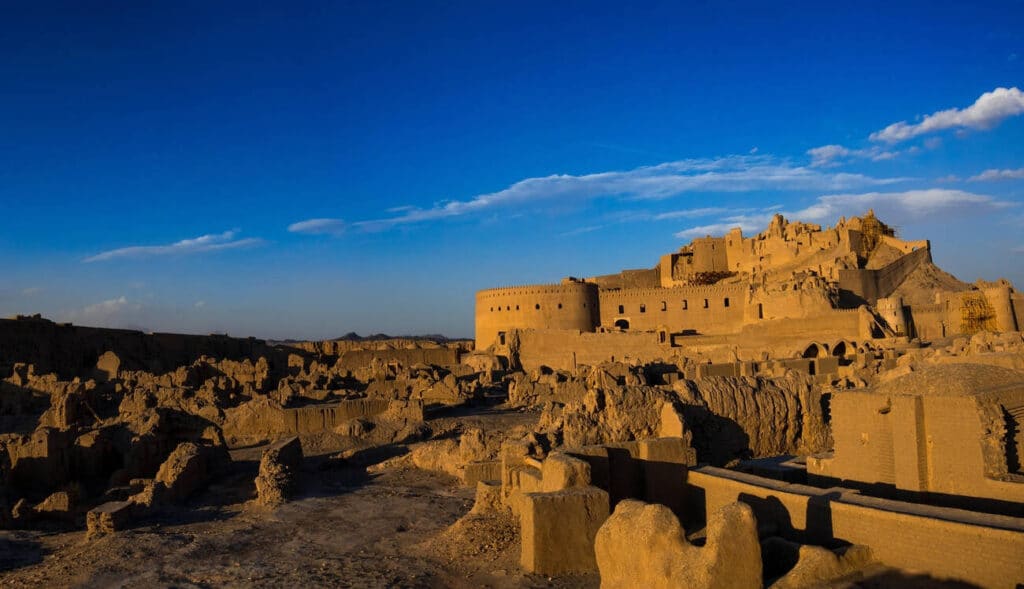
The residential quarters of Arg-e Bam reflected the social stratification and lifestyle of its inhabitants. From modest mud-brick homes to more elaborate houses with central courtyards and wind towers, these living spaces were ingeniously designed to offer respite from the desert heat, highlighting the adaptability and resourcefulness of the people.
Sacred Spaces: Mosques, Tekiyehs, and the Importance of Water
Religion and spirituality were integral to the community life in Arg-e Bam, with mosques and tekiyehs (places for religious gatherings) serving as focal points for worship and social interaction. The Congregational Mosque, with its impressive mihrab and courtyards, was not only a place of prayer but also a center for learning and community gatherings.
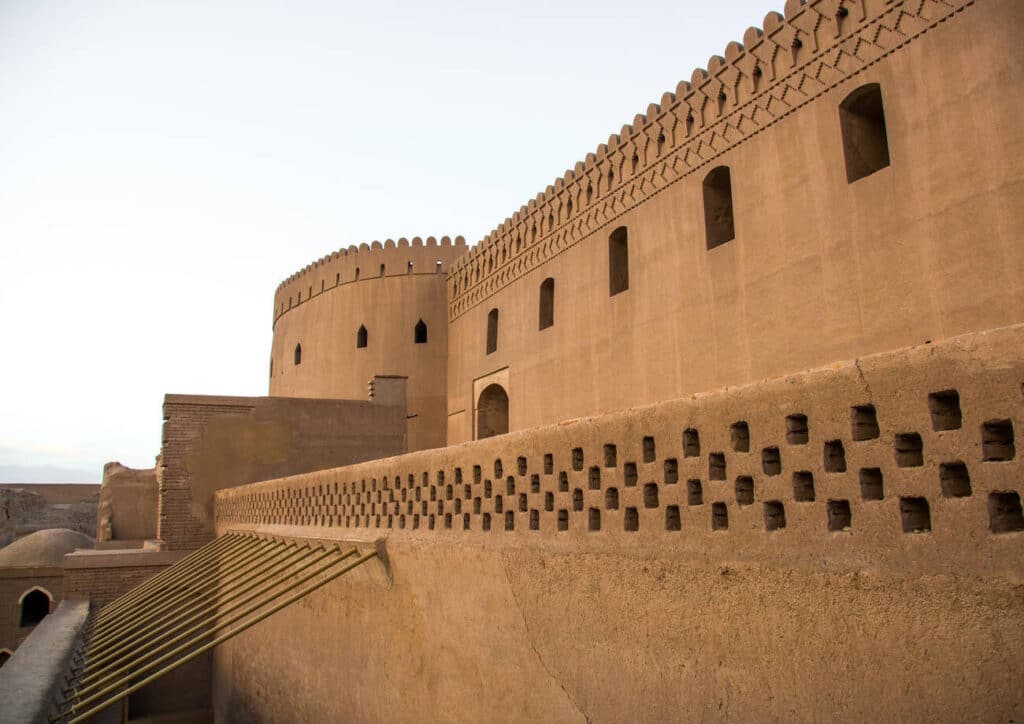
Water, the lifeblood of Bam, was revered and integrated into the spiritual fabric of the citadel. The qanats and wells, including the revered Chāh-e Sāheb-e Zamān (Well of the Age’s Master), were considered sacred, underscoring the deep connection between the people, their faith, and the environment. This reverence for water manifested in the careful planning of water distribution and its integration into the religious and architectural landscape of Bam.
Cultural Landscape
Living with the Desert: Qanats and Agriculture
The survival and prosperity of Arg-e Bam in the heart of a desert landscape were made possible by the ingenious use of qanats—an ancient system of underground canals that tapped into aquifers and brought water to the surface.
This remarkable engineering feat not only provided a sustainable water source for drinking but also for irrigation, transforming the arid surroundings into fertile lands capable of supporting agriculture and thus, life itself.
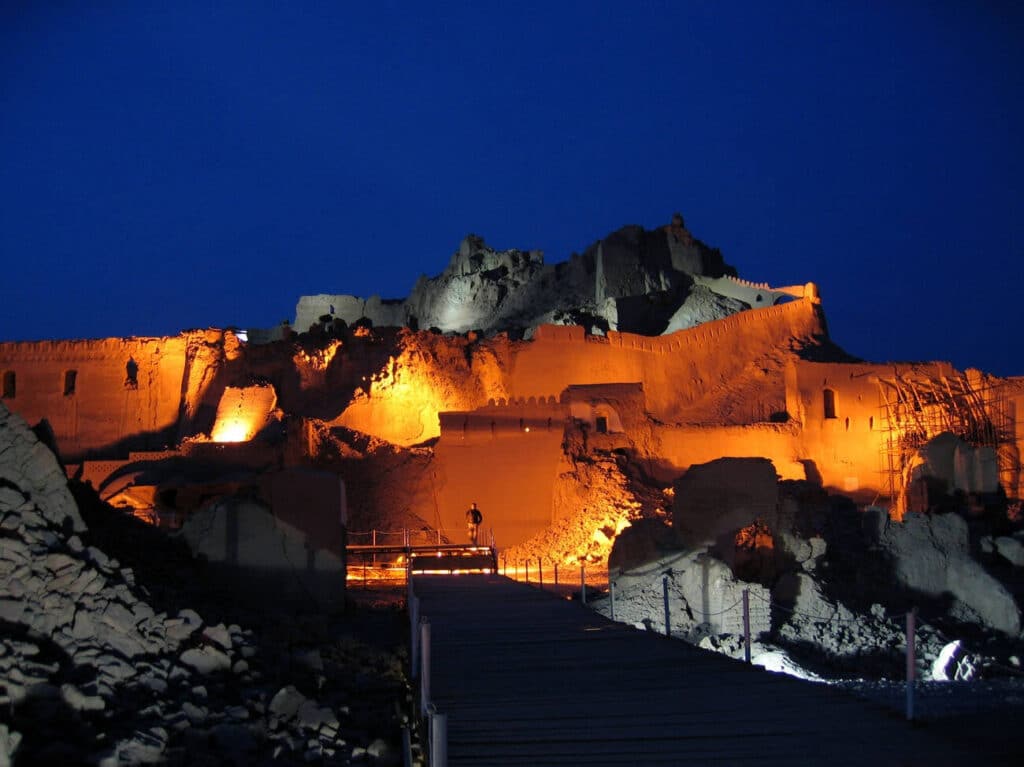
The cultivation of date palms, citrus fruits, and various crops around Bam created a verdant oasis that starkly contrasted with the harsh desert beyond. This harmonious relationship between the people of Bam and their environment showcases a profound understanding of sustainable living and environmental stewardship, lessons that remain relevant in today’s world.
Social and Economic Fabric: Trade Routes and Silk Production
Arg-e Bam’s strategic location at the crossroads of trade routes not only facilitated the exchange of goods but also the flow of ideas, cultures, and innovations. The city emerged as a vital node in the Silk Road network, connecting the East and West.
The production and trade of silk and cotton garments became the cornerstone of Bam’s economy, attracting merchants, travelers, and scholars from across the known world.
The bustling bazaars of Bam were a testament to its economic vitality, where local crafts, precious metals, spices, and textiles were traded.
This vibrant trade underpinned the social and economic fabric of the city, fostering a cosmopolitan society that was open, diverse, and dynamic. The legacy of this era, characterized by cultural exchange and economic prosperity, continues to inspire admiration for Bam’s historical significance in global trade.
Spiritual Heritage: Religious Traditions and Practices
The spiritual heritage of Arg-e Bam is woven into the very fabric of its cultural landscape. The city’s mosques, tekiyehs, and the reverence for water reflect a deep spiritual connection that transcended daily life. These sacred spaces served not just as places of worship but as community centers where people gathered, exchanged news, and celebrated religious festivals. The Congregational Mosque and various smaller mosques dotted throughout the citadel were focal points for communal prayers and reflection, embodying the spiritual unity of the community.
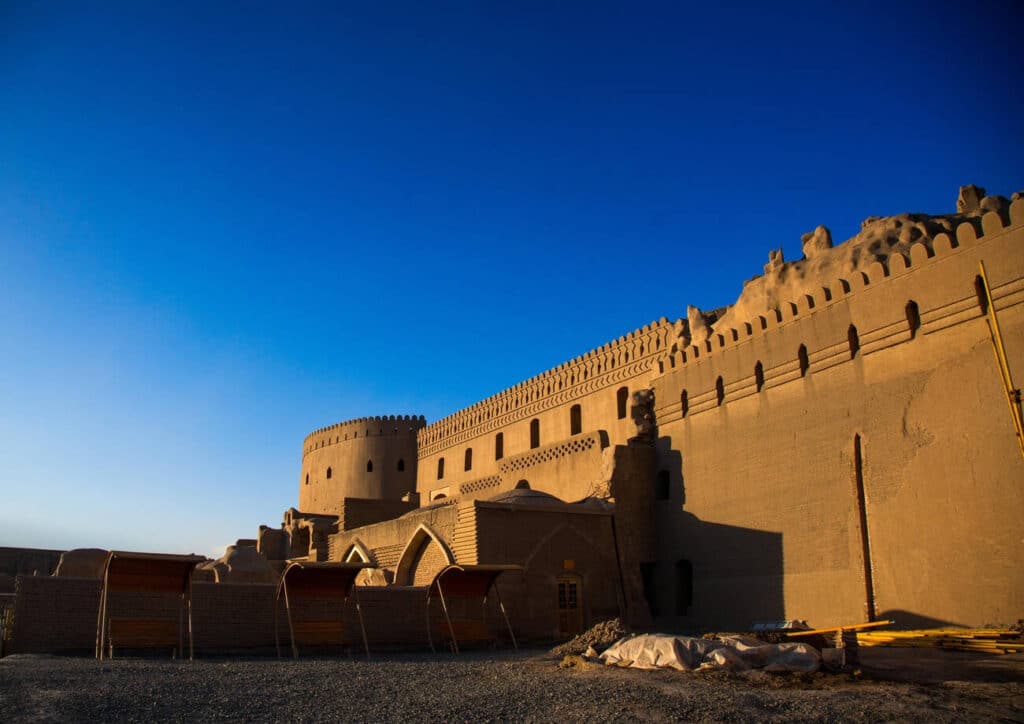
The tekiyehs, particularly important during the Shiite commemoration of Muharram, were venues for passion plays that reenacted the martyrdom of Imam Hussein. These performances, deeply emotional and spiritually charged, reinforced the communal bonds and shared faith among the residents. The integration of water into religious and architectural designs further highlights the spiritual reverence for this life-sustaining resource, symbolizing purity, renewal, and the divine grace that sustains life in the harsh desert environment.
Restoration and Preservation Efforts
Post-Earthquake Restoration: Challenges and Achievements
The devastating earthquake of December 26, 2003, marked a turning point for Arg-e Bam, thrusting the ancient citadel into the global spotlight. The destruction brought about by the quake presented monumental challenges to restoration efforts. The first hurdle was stabilizing and documenting the ruins to prevent further loss. Specialists in earthquake engineering, archaeology, and heritage conservation were mobilized to assess the damage and devise a plan for Bam’s revival.
One of the significant achievements in the post-earthquake restoration was the meticulous process of earthquake archaeology, which allowed experts to understand the citadel’s construction techniques better and provided insights into its historical layers. Innovative conservation methods, blending traditional techniques with modern seismic reinforcement, were employed to restore the structural integrity of the citadel’s walls and buildings.
International and Local Efforts in Conservation
The restoration of Arg-e Bam has been a collaborative effort, drawing on both international aid and local expertise. UNESCO, along with various international partners, played a crucial role in coordinating the restoration efforts, providing technical expertise, and mobilizing financial resources. The global response underscored the universal value of Arg-e Bam as a cultural heritage site that belongs to all humanity.
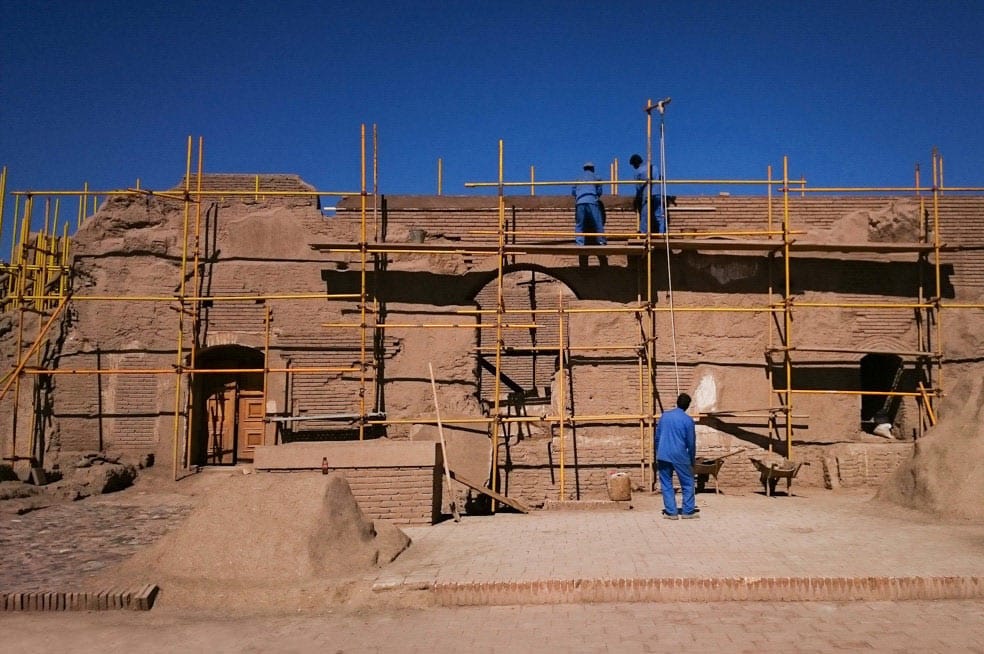
Equally important were the contributions of local communities and Iranian cultural heritage organizations. Their intimate knowledge of traditional construction techniques and the cultural significance of the site were indispensable in the restoration process. Local craftsmen, artisans, and conservationists worked tirelessly, often innovating on traditional methods to meet the unique challenges posed by the earthquake’s aftermath.
Future of Arg-e Bam: Preservation and Sustainable Tourism
Looking ahead, the future of Arg-e Bam lies in the delicate balance between preservation and sustainable tourism. The site’s reopening to visitors has reignited interest in Bam’s rich history and cultural heritage, providing a much-needed boost to the local economy. However, managing tourist footfall and ensuring that tourism development does not compromise the site’s integrity is paramount.
Sustainable tourism strategies that prioritize conservation, educate visitors on the site’s historical and cultural significance, and engage local communities in tourism development are being implemented. Efforts to promote Arg-e Bam as a case study in disaster recovery and heritage preservation are underway, highlighting the site’s resilience and the global collaboration that has underpinned its revival.
Visiting Arg-e Bam: A Guide for Travelers
Today, Arg-e Bam stands as a poignant symbol of cultural heritage and resilience, attracting travelers from around the globe. For those planning a visit, the journey to this ancient citadel promises a unique blend of historical discovery and architectural marvel.
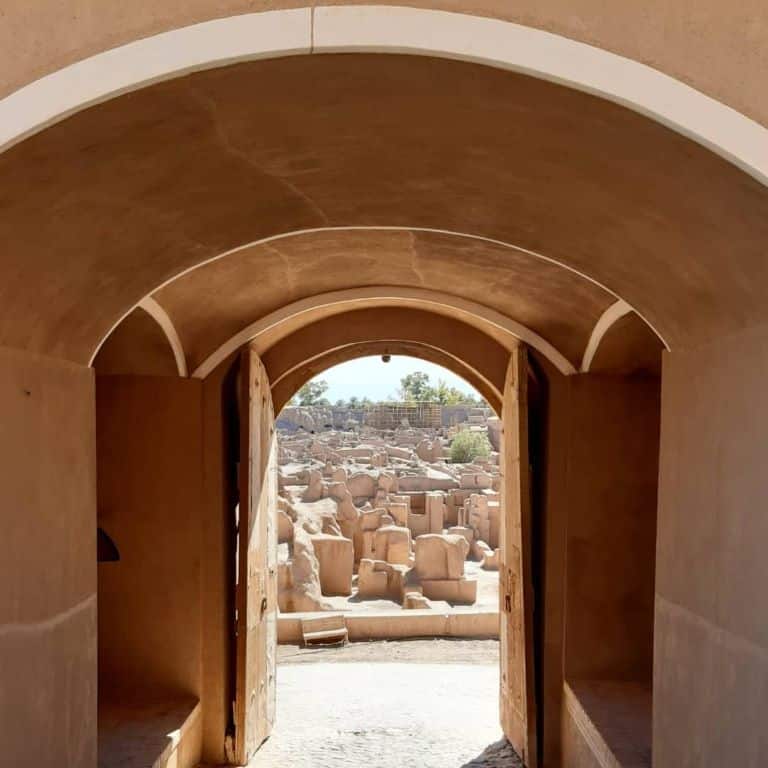
Getting There
Arg-e Bam is located near the modern city of Bam in Kerman province, southeastern Iran. The nearest major city is Kerman, approximately 200 kilometers away, accessible by road. Bam has a small airport, with domestic flights connecting to Tehran and other major cities. Buses and taxis are available for the final leg of the journey to the citadel.
Best Time to Visit
The best time to visit is during the cooler months, from October to April, when the desert climate is more forgiving. Upon arrival, visitors are greeted by the towering remnants of the citadel walls, inviting exploration of its vast grounds.
Tips for Travelers
- Respect the Site: Arg-e Bam is not just a tourist attraction but a symbol of cultural resilience. Tread lightly and follow guidelines to help preserve this UNESCO World Heritage site.
- Guided Tours: Consider hiring a local guide to enrich your visit with historical context and stories that bring the ruins to life.
- Stay Hydrated: The desert climate can be unforgiving. Carry water, wear sun protection, and dress in light, breathable clothing.
- Photography: The best light for photography is during the golden hours, early morning, and late afternoon. The interplay of light and shadow on the ruins makes for stunning photographs.
Appendices
Timeline of Arg-e Bam’s History
- 6th to 4th century B.C. – Earliest settlements traced back to the Achaemenid period.
- 3rd century B.C. to 3rd century A.D. – Expansion and fortification during the Parthian and Sassanian periods.
- 7th to 11th centuries – Bam experiences its golden ages as a center for trade, especially known for silk and cotton production.
- 18th century – Decline begins with the advent of the Qajar dynasty, leading to gradual abandonment.
- 1932 – The citadel of Arg-e Bam is used as a garrison until this year but eventually gets totally abandoned.
- 1953-1973 – Recognition and initial conservation efforts begin, with most work carried out from the 1970s onwards.
- December 26, 2003 – A devastating earthquake hits Bam, leading to widespread destruction of the citadel.
- 2004 onwards – International and local restoration efforts are intensified, focusing on preserving Bam’s cultural heritage.
Glossary of Terms
- Achaemenid Period: Era of the Achaemenid Empire in ancient Persia, known for its significant cultural and architectural achievements.
- Qanats: Ancient underground canals used in Iran for irrigating land and providing drinking water.
- Chineh and Khesht: Traditional construction techniques using mud layers (Chineh) and mud bricks (Khesht).
- Tekiyeh: Place of gathering for Shiite Muslims, especially during the Muharram commemorations.
- Eyvan: A large vaulted hall open at one end, commonly found in Persian architecture.
- Qajar Dynasty: The ruling dynasty in Persia from the late 18th century to the early 20th century.
References and Further Reading
- UNESCO World Heritage Centre. “Bam and its Cultural Landscape.” This document provides comprehensive information on Arg-e Bam’s history, architecture, and cultural significance.
- CRATerre-EAG. “The Conservation of the Earthen Heritage in Arg-e Bam.” An extensive study on the conservation techniques and challenges faced in restoring Arg-e Bam.
- Piran, P. “Resilience of Historical Buildings Against Earthquakes: Lessons Learned from Bam.” This article analyzes the structural impact of the 2003 earthquake on Arg-e Bam and discusses restoration strategies.
- Beck, L. “The Qanat: Archaeology and Environment.” This book offers insight into the historical development and environmental significance of qanats, with references to Arg-e Bam.




thanks alot for good article